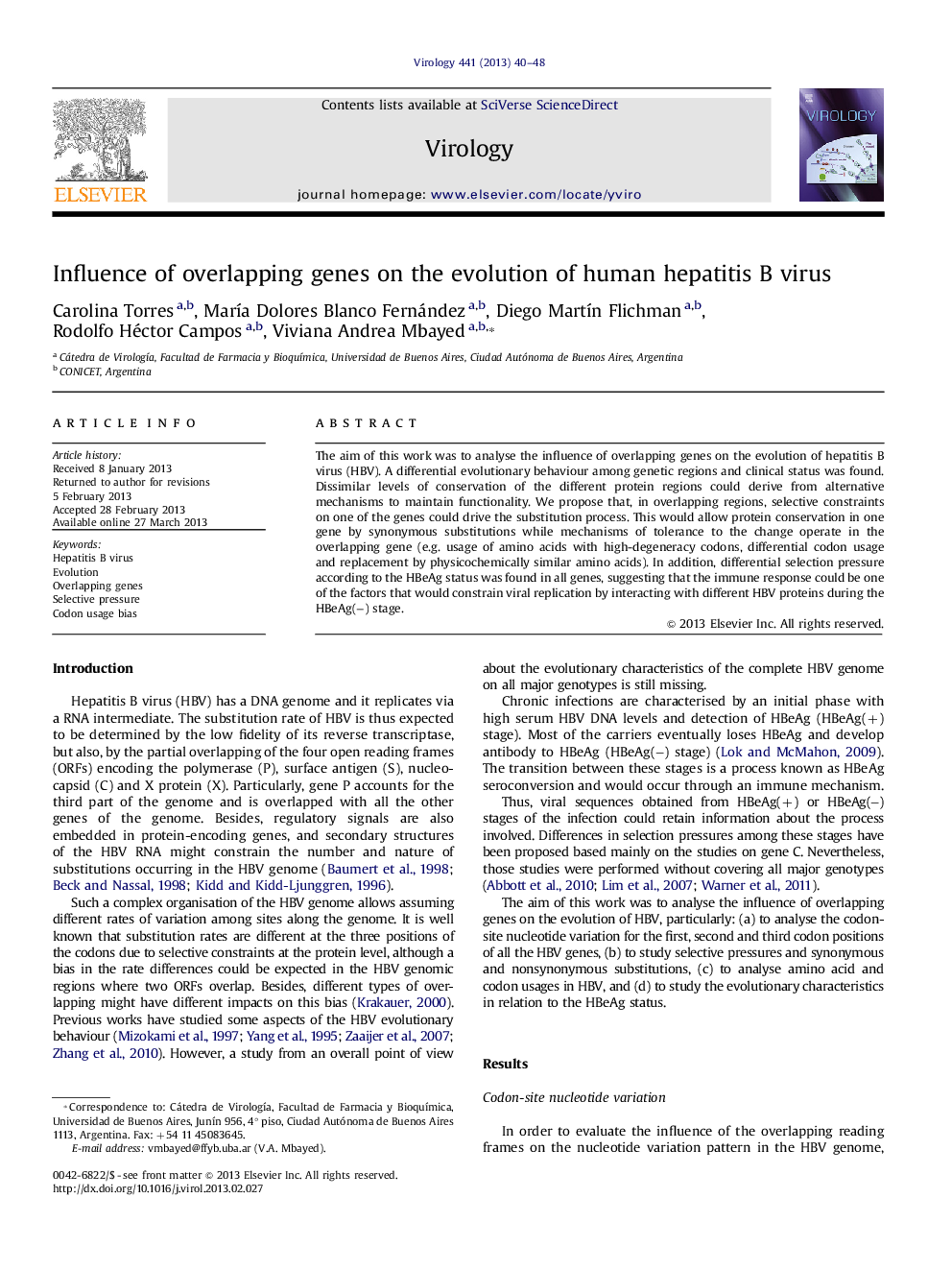| Article ID | Journal | Published Year | Pages | File Type |
|---|---|---|---|---|
| 3424102 | Virology | 2013 | 9 Pages |
The aim of this work was to analyse the influence of overlapping genes on the evolution of hepatitis B virus (HBV). A differential evolutionary behaviour among genetic regions and clinical status was found. Dissimilar levels of conservation of the different protein regions could derive from alternative mechanisms to maintain functionality. We propose that, in overlapping regions, selective constraints on one of the genes could drive the substitution process. This would allow protein conservation in one gene by synonymous substitutions while mechanisms of tolerance to the change operate in the overlapping gene (e.g. usage of amino acids with high-degeneracy codons, differential codon usage and replacement by physicochemically similar amino acids). In addition, differential selection pressure according to the HBeAg status was found in all genes, suggesting that the immune response could be one of the factors that would constrain viral replication by interacting with different HBV proteins during the HBeAg(−) stage.
► In overlapping regions one of the genes would drive the substitution process. ► Alternative mechanisms are involved in maintaining protein functionality. ► A differential selection pressure according to the HBeAg status was found.
